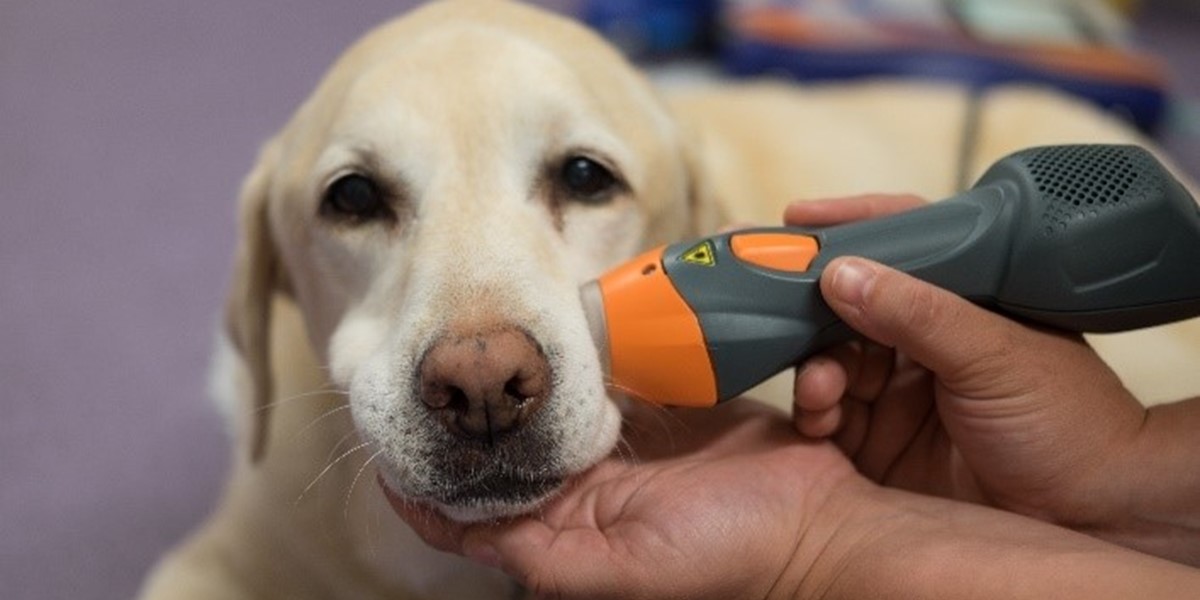
Periodontal disease and managing post-operative dental extraction pain

Many of us have a continual battle with our pets' oral health. Despite our best efforts: brushing teeth, feeding the appropriate diet, and giving the occasional dental treat; many of our pets will need regular dental treatment at the vets. In extreme cases, but not infrequently, teeth will need to be extracted.
The most common problem affecting dogs’ mouths is gum (periodontal) disease. Unfortunately, the symptoms of periodontal disease often go unnoticed until the disease is so severe that the gums become eroded and teeth either fall out or need to be removed. It is caused by bacteria in the mouth: immediately after eating, bacteria along with food particles and saliva form a sticky film called ‘plaque’ over the surface of the teeth. If the plaque isn’t removed by brushing or other means (e.g. chewing a specially formulated diet), it continues to accumulate, eventually calcifying into tartar. The bacteria in plaque and tartar activates the immune system, and white blood cells are recruited to attack and kill the bacteria. The white blood cells release enzymes to combat the bacteria, which also unwantedly breaks down gum tissue leading to gingivitis (inflammation of the gums) and eventually periodontitis (inflammation and damage of the tissue and bone holding the tooth in place). Thankfully, gingivitis can be reversed by brushing teeth daily, and in some cases feeding a specially formulated dental diet. But unfortunately, once periodontitis has set in, advanced dental treatment or tooth extraction is required. If left untreated, worsening pain, further bone loss, and even jaw fracture may ensue.


Although curative, dental extraction can be temporarily very painful, as some of us will have experienced ourselves, due to the trauma of getting the tooth out, and to the high concentration of nerves supplying the root. Pain relief is always required and it can take a bit of time for our pets to get back to normal!
Thankfully there is a new treatment to ease this pain. Used by numerous private dentists, Class IV Laser therapy is a safe and non-invasive treatment, which provides effective pain relief and anti-inflammatory effects to targeted areas of the body. Laser therapy involves directing infra-red light into inflamed or painful tissues. This infra-red light provides energy to the cells within the tissue allowing them to repair more quickly and reduces the transmission of pain signals from the tissue to the central nervous system; having a combined effect on tissue healing and discomfort. A single treatment immediately after removing a tooth can reduce pain dramatically, boosting appetite and improving post-operative quality of life. Laser therapy can be also be used ongoing, in combination with improvement in oral care, to reduced pain associated with chronic gingivitis.


A recent study has tested post-operative satisfaction after the application of laser for pain management in human patients with surgical extraction of impacted third molars. 42 patients requiring wisdom teeth extraction were divided into 2 groups. This first group received laser therapy immediately after their teeth were extracted. The second group was given sham treatment. Neither the patients or the dentist knew who was in the treatment group vs the control group. Treatment with laser demonstrated reduced postoperative pain, swelling, bleeding, speech impairment, and use of pain relief. You can read the article here.